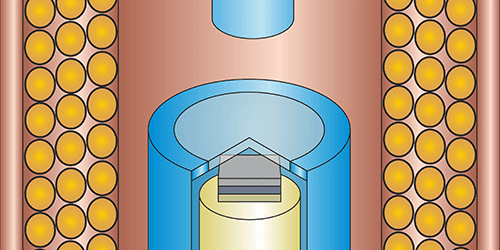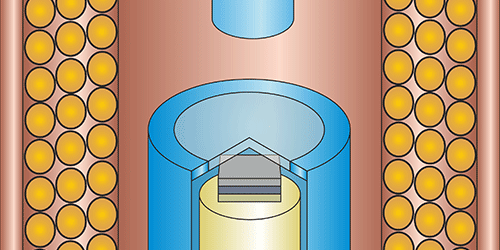Sensing Earthly Magnetic Fields
The resistance of some organic conductors drops and rises by a small but measurable amount in magnetic fields of a few millitesla (mT), an effect that might be used to sense small variations in a weak field. Philippe Klemm from the University of Regensburg, Germany, and colleagues have now identified an organic conductor in which this field effect is particularly sensitive, allowing them to detect field variations of just a hundred nanotesla (nT), or less than 1% of the strength of Earth’s field. The team suggests that the material’s high sensitivity to small fields might be related to the field-sensing mechanism that allows birds to migrate with the seasons.
The team fabricated a thin film of a polymer-based organic conductor known as PEDOT:PSS. They applied a magnetic field to the film and found that its resistance dropped by a tiny fraction of a percent as the field was increased to 1 mT; the film’s resistance then curved sharply upwards as the field was increased further. At cryogenic temperatures, this “bend” in the magnetoresistance was sharp enough for the device to detect field variations of about 100 nT.
Magnetoresistance in organic conductors occurs mainly because the recombination of electrons with holes depends on the charge carriers’ spin states, which may vary in a field. Klemm and colleagues suggest that the sensitivity of PEDOT:PSS to very small fields might originate in spin-spin interactions that affect the recombination rate. Similar models of spin-dependent recombination have been used to explain magnetoception in migrating birds, whose field sensitivity is comparable to that seen in the team’s devices.
This research is published in Physical Review B.
–Jessica Thomas
Jessica Thomas is the Editor of Physics.





